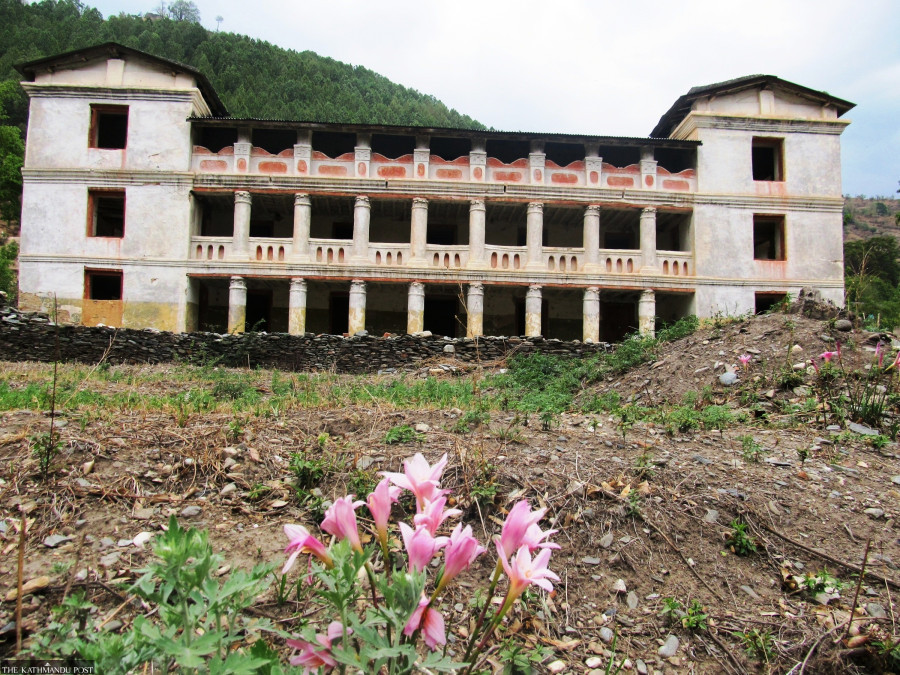Editorial
Monumental mistake
The neglect of our historical monuments and artefacts will ultimately lead to an identity crisis.
Nepal is home to countless historically and culturally significant heritages, including temples, stupas, palaces, monuments, hitis and other age-old structures. UNESCO has acknowledged Kathmandu Valley, Lumbini, Chitwan National Park and Sagarmatha National Park as the World Heritage Site, and the country is preparing to have Tilaurakot—the capital of the ancient Shakya dynasty—in the list. However, preserving these invaluable sites has been a challenge. Many of Kathmandu’s heritages were reduced to rubble when a powerful 7.8 magnitude earthquake struck Nepal in 2015. A decade on, the crumbled heritages of the valley, many of which are yet to be restored, lay bare the apathy of our authorities. Even as post-earthquake reconstruction efforts have been carried out, they remain largely limited to the valley.
Our glorious past is gradually vanishing from other parts of the country as well. In Bajhang district, for instance, palaces with historical and archaeological significance have either fallen down or deteriorated. The stone inscriptions and ancient statues there are also in a sorry state. Concomitantly, countless heritage sites in the Tarai and the trans-Himalayan regions of Mustang and Dolpo await the federal government’s attention. For instance, the unprotected sculptures and artefacts of Simraungadh, which date back over 1,000 years, are on the verge of being forever lost. The remains and artefacts are either being stolen or smuggled. But conservation efforts remain sluggish, with only cosmetic repairs to a few monuments.
The heritage sites, already listed as endangered by UNESCO, are now bearing the brunt of air pollution. The ancient structures are degrading due to gaseous and solid compounds on their surface. Climate change is another threat to heritage sites. Also part of the problem are the concrete buildings surrounding them. The International Council on Monuments and Sites (ICOMOS) State of Conservation Report has repeatedly highlighted the “adverse impacts of unsympathetic development and new urban infrastructure” in monument zones. Lack of a proper sewage system, for instance in the Kathmandu Valley, is further exacerbating their vulnerability.
Given these multifaceted challenges, heritage assessment efforts must be extended to different parts of the country. When it comes to conserving them, federal, provincial and local levels often don’t work in tandem. Local units must have the power and resources to carry out conservation efforts as they best understand the history and cultural significance of the sites in their midst. The commendable work of the Kathmandu, Lalitpur and Bhaktapur metropolitan cities in maintaining heritage sites by keeping intact traditional designs even in modern infrastructure should serve as a model for other urban and rural municipalities.
In light of the growing impacts of air pollution, especially in Kathmandu, the Department of Archaeology should study the status of chemicals and carbon on wood and conduct routine maintenance. As the world celebrates World Heritage Day today with the theme “Heritage under Threat from Disasters and Conflicts: Preparedness and Learning from 60 years of ICOMOS Actions”, Nepal must be mindful of the adverse effects of air pollution and climate change and rethink its plans and policies. Moreover, the role of the general public in conserving heritage sites cannot be overlooked. It is up to each and every one of us to realise the enormous value of our heritage and instill the same awareness in the younger generations. Our cultural artefacts capture the essence of being residents of this land of rich culture and history. Lose them and we face a serious identity crisis.




 22.64°C Kathmandu
22.64°C Kathmandu














